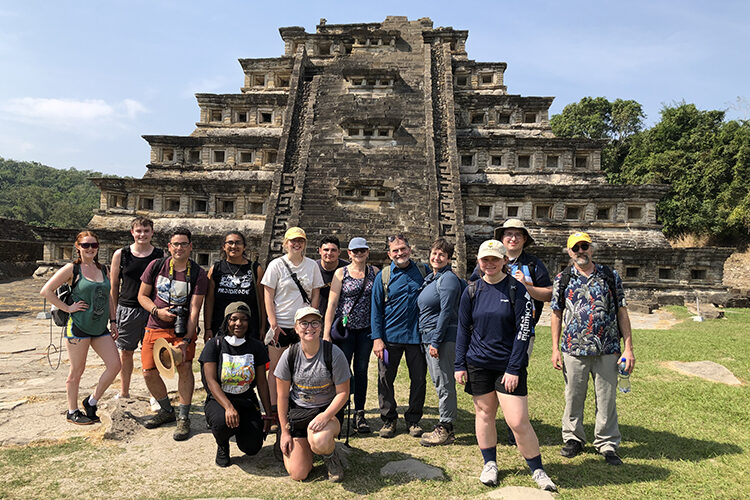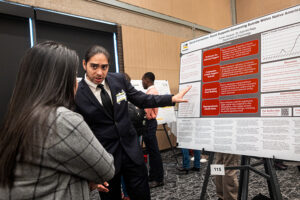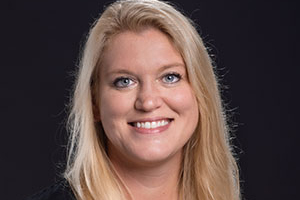What’s the most challenging part about a two-week study abroad trip that covers nearly 2,000 miles throughout Mexico? According to Kacper Zaprzalka, it’s figuring out how to try as many different foods as possible — like chapulines (grasshoppers) or mole sauce.
Zaprzalka, who graduated from UW-Milwaukee in May with a bachelor’s degree in atmospheric science, was one of 12 students from across disciplines who went on the Mexico: Air Pollution and Ancient Cultures study abroad trip during UWinteriM in January. He chose the program because he’s interested in the air pollution side of meteorology, but the experience went far beyond science.
Designed and led by Professor Jonathan Kahl, the course allows students to see firsthand the effects of acid rain and air pollution on cultural heritage sites. The trip begins with a visit to the Mexico National Museum of Anthropology, where students get a broad picture of the Indigenous cultures of Mexico.
They then travel to pyramids and archeological sites in Teotihuacán (near Mexico City), El Tajín (Papantla), Monte Albán (Oaxaca), and the ancient Mayan jungle city of Palenque. They also participate in activities, such as lab practicums and rainwater collections, with university students in Ciudad del Carmen. Along the way, they are immersed in the unique landscape, culture and food of each area.
“I’m a big fan of study abroad in general. It opens people’s minds to new experiences, and employers love to see it on resumes,” Kahl said. “For me, it’s a fantastic experience that I love to share with students. It’s a big spread-your-wings, leave-your-comfort-zone experience.”
Interdisciplinary focus
Kahl, who has conducted acid rain research in Mexico for 20 years, wants students to learn about the environmental corrosion of historic structures that is caused by the atmosphere — and to also understand the interdisciplinary nature of the challenges. Students talk about what can be done to protect these sites and how those actions might take limited resources away from other social issues. They also journal every day to prompt them to think about non-science related issues.
“It’s not only about the science. It’s about anthropology, and social and economic issues, too,” Kahl said.
Because Kahl focuses on the multidisciplinary aspect of acid rain research, the course is open to students in any major, leading to a richer experience among people whose paths normally wouldn’t cross.
“The community building aspect of the trip is incredible,” said Bart Adrian, a senior lecturer in atmospheric science who joined the trip for the first time. “I thought my expectations were pretty high, and it was even better than what I thought it would be.”
‘Once in a lifetime’
Zaprzalka agrees about the uniqueness of the trip and encourages other students to participate if they can.
“It truly was a once in a lifetime experience to see so many different cities and places in only a two-week time frame,” he said. “Anyone who is adventurous with food and enjoys learning about new cultures will love this trip.”
The next trip will take place January 2024.








